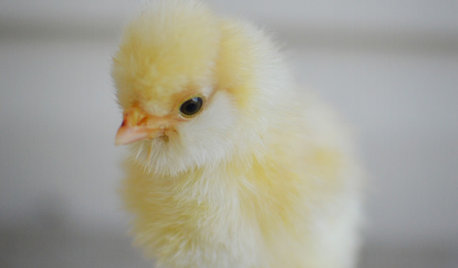Genera breeding between Families within same Order?
Bob Byrnes
22 years ago
Related Stories

HOUZZ TOURSMy Houzz: Home Full of Boys Achieves Order and Inspiration
A 3-month overhaul produces an organized and inviting space fit for this Florida family of 9
Full Story
DECORATING GUIDESHow to Bring Order to Your Delightfully Eclectic Room
You've picked up your furniture and finds over the years — here's how to tie it all together
Full Story
LIFEWorld of Design: See How 7 Families Live in Multigenerational Homes
What happens when three or more generations live within shouting distance of one another? More hugging than shouting, actually
Full Story
COMMUNITYTogetherness Take 2: Is a Cohousing Community for You?
Missing that sense of connection? Consider the new breed of neighborhood with a communal bent
Full Story
GREEN BUILDINGJust Add Water: Rain Barrel Magic
Take your rainwater storage from practical to beautiful with a new breed of design-friendly rain barrels
Full Story
PETSWhat You Need to Know Before Buying Chicks
Ordering chicks for your backyard coop? Easy. But caring for them requires planning and foresight. Here's what to do
Full Story
FARMHOUSESHouzz Tour: Young Family’s Old Farmhouse With Timeless Charm
An interior designer transforms her family’s 1880 farmhouse with a stylish mix of vintage and new decor
Full Story
DISASTER PREP & RECOVERYFamily’s New Style Rises in the Aftermath of a Flood
After their damaged walls are demolished, homeowners realize they like the open space and decide to keep it
Full Story
REMODELING GUIDES10 Features That May Be Missing From Your Plan
Pay attention to the details on these items to get exactly what you want while staying within budget
Full Story
HOUZZ TOURSHouzz Tour: Family Reimagines the New England Farmhouse
See how a family in Maine takes apart a falling-down barn and uses the timber for an affordable new family home
Full Story





spanishfli_hotmail_com
Pardancanda
Related Professionals
Ashland Landscape Architects & Landscape Designers · Surprise Landscape Architects & Landscape Designers · Comstock Park Landscape Architects & Landscape Designers · Milwaukee Landscape Architects & Landscape Designers · Azalea Park Landscape Contractors · Choctaw Landscape Contractors · Commack Landscape Contractors · Estelle Landscape Contractors · North Lauderdale Landscape Contractors · Birmingham Carpenters · Glendale Heights Carpenters · Walker Carpenters · Worcester Carpenters · Carmichael Fence Contractors · Orlando Fence Contractorsrosebreeder_OverbrookeGardens_com
Pardancanda
davhlmbe_pacbell_net
Pardancanda
rosebreeder_OverbrookeGardens_com
rutten_club-internet_fr
Pardancanda
Atomic_Skull